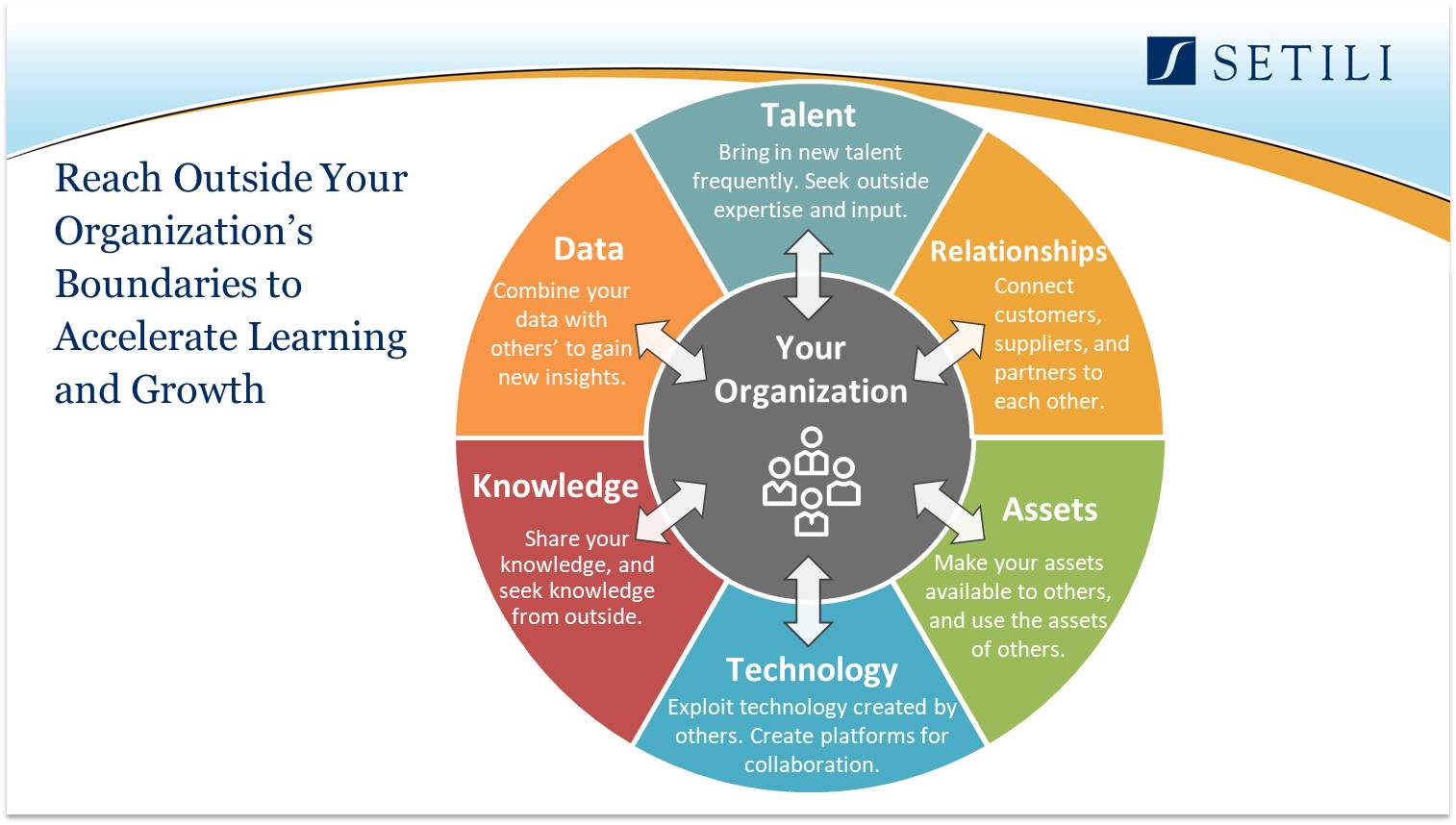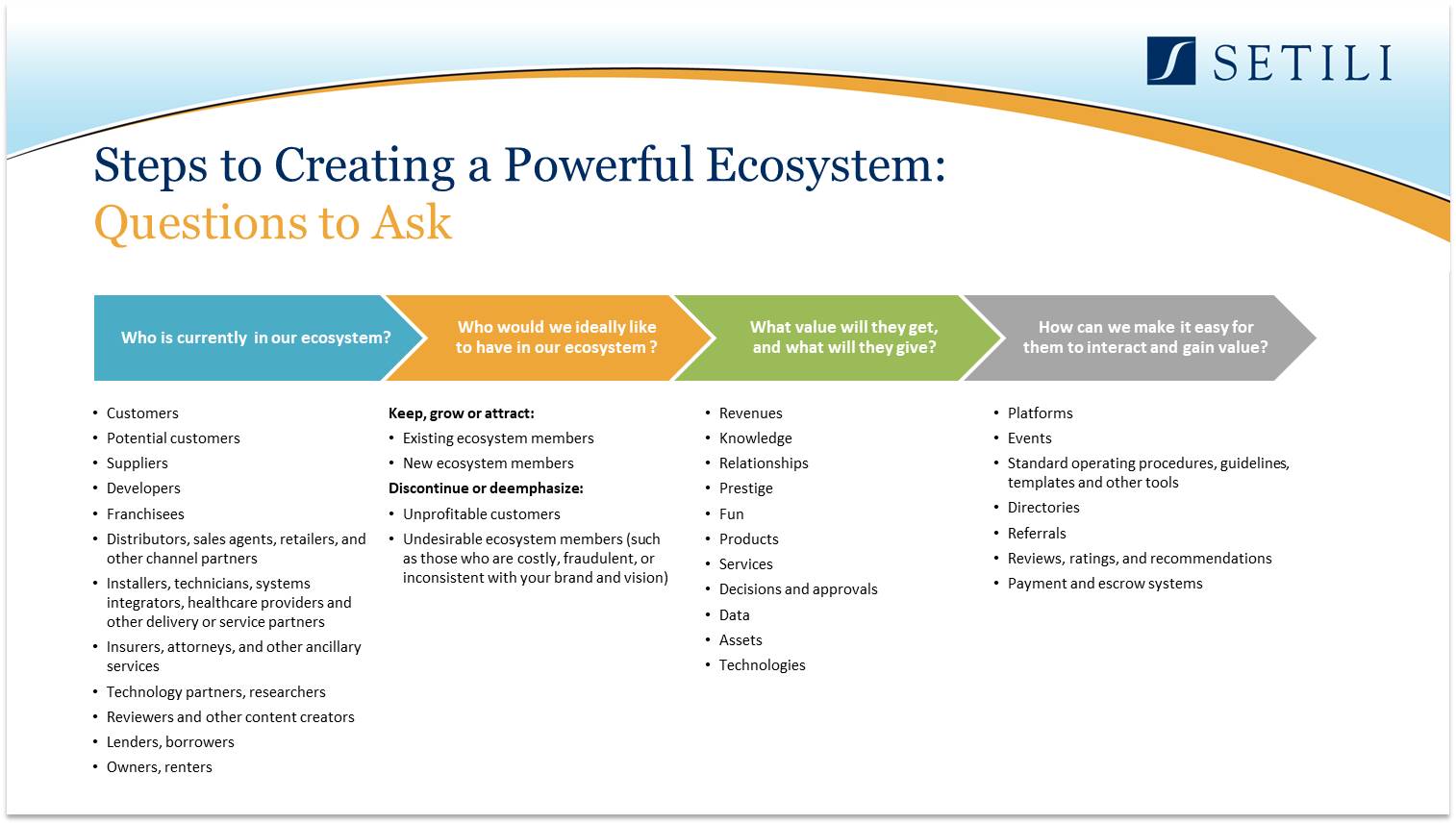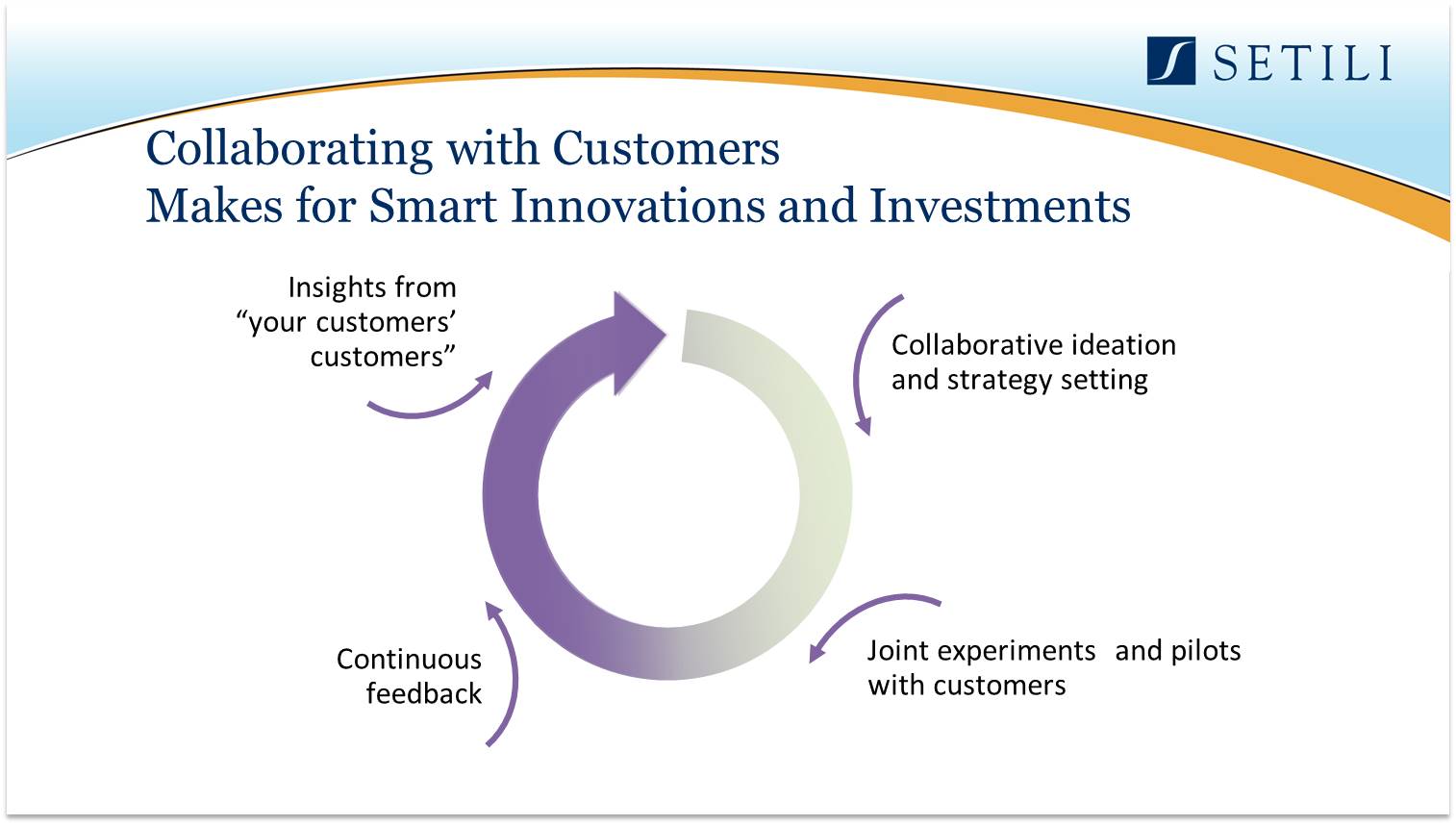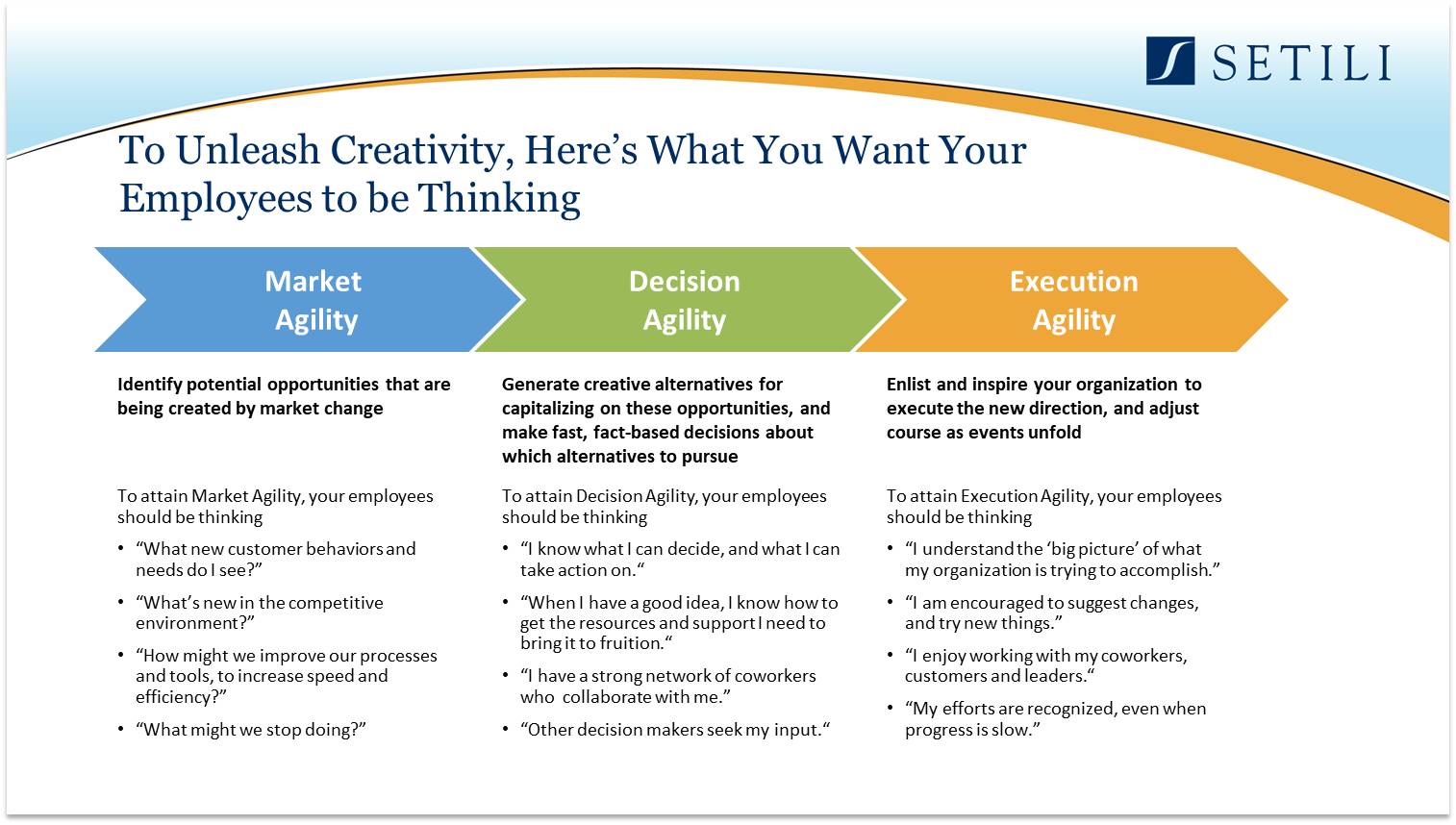The Rules Have Changed
In a world of constant change and disruption, it’s important to stay agile and courageous. Whether you’re leading a small team or a large company, you will need to be bold and to act without fear.
That’s easier said than done.
Amanda Setili is president of strategy consulting firm Setili & Associates, a firm boasting clients ranging from Coca-Cola to Walmart. Her new book, Fearless Growth: The New Rules to Stay Competitive, Foster Innovation, and Dominate Your Marketsis packed with examples and tools to stay ahead of the crowd.
I recently spoke with Amanda about her work and her new book.
What is driving the need for fearless growth?
We all know growth is essential to a business’s health, but no matter what industry you’re in, you probably feel stress brought on by new technologies, changing customer behaviors and preferences, and new competitors that threaten your business’s ability to grow. Here are a few examples:
- The food industry is investing to keep up with sometimes capricious trends in public perception regarding low-fat, low-carbohydrate, non-GMO, gluten-free, organic, alternative sweeteners and grains, and other choices.
- The consumer products industry must continuously seek to find new and better ways to interact with their customers digitally. They must respond to changing consumer buying behaviors and even to consumers’ concerns about political, social, and environmental issues.
- The entertainment industry is being upended, with companies that formerly were just conduits for content—like Netflix, Amazon, Google (via its YouTube subsidiary), and AT&T (via the Time Warner merger)—now creating their own original series.
- The auto industry is changing gears to adapt to the way ride-sharing services, such as Lyft and Uber, are reducing people’s desire to own a car.
- The banking industry is scrambling to adjust to new modes of consumer-to-consumer payment (such as Venmo) and new forms of lending and credit assessment.
- The transportation and logistics industry is responding to trends in globalization, automation, and the rise of e-commerce giants like Amazon and Alibaba.
- Industrial products companies are struggling with decisions about how best to deploy sensors and artificial intelligence to improve their products’ performance and reduce cost.
- The energy industry is coping with low oil prices, new government regulations, and emotional consumer sentiment on both sides of the fracking, renewable energy, and coal debates.
If your business hasn’t felt the effect of massive market changes yet, it’s likely that you will soon. And if you wait until disruption occurs, it will be too late to respond effectively.
You must grow your business, but most growth initiatives entail risk of one kind or another. I often hear company leaders saying things like, “Our core business is at risk of disruption. We need to branch out into new businesses to grow, but we don’t have all the capabilities we need—they’re not in our DNA,” or, “We’re in unfamiliar terrain and aren’t sure that customer demand will materialize. There are lots of unknowns.”
To pursue growth, leaders and employees must learn to do things they have never done before, and they must grapple with new threats. All of this adds up to the fact that trying to grow a business in today’s turbulent markets is pretty scary—it’s perfectly reasonable and rational for company leaders to be worried. I developed the new rules of fearless growth to help leaders create organizations that have the courage, speed, and agility to succeed, no matter what the future brings.
Establish Forward Momentum
What can companies do to grow fearlessly, even when their business environment is changing fast?
When leaders encounter risks in their business environment, the natural human response is to hunker down, tighten the controls, and defend the existing business. What is needed, however, is not tightening controls, but the opposite. You need a fearless approach to learning and adapting to market change, and that means giving up a degree of control—to employees, business partners, and customers—in order to gain control. It’s like learning to ride a bike. At first, the bike seems tipsy and unstable, but once you start going, the movement itself creates stability.
Can you give me an example?
Sure. A technology company that I know was under threat because a new competitor had entered its market with a low-priced disruptive technology. The competitor’s solution enabled B2B customers to bypass the company’s hardware entirely, by using off-the-shelf tablets, such as iPads, for a key element of the workflow.
Many millions of dollars of revenue was at risk, so the president of the division, Bill, needed to act quickly. But there was a problem. All of his assets, and his entire workforce, were set up to support the existing business model. He needed to quickly build new capabilities, to compete in a new way.
First, he tapped into the smarts of his employees. He assembled a cross-functional team made up of 15 of the brightest, most creative folks from the sales, customer service, and technology teams—people who normally had little reason to interface with each other, and who brought diverse skills and perspectives. He gave them wide leeway to get out and talk with customers about what was missing from the competitor’s solution and what new problems his company could solve for them.
The team came up with a number of strategic alternatives. Bill realized that he would need to reach outside the walls of his company to gain new capabilities and that finding the best strategic solution would require experimentation. He asked three of his company’s most demanding, forward-thinking customers to collaborate with his team to develop a next-generation solution, which would offer all of the value of the competitor’s offering, but would also take advantage of the things that only his company could offer. For example, Bill’s company could provide greater data security and local technical support—benefits that would be very difficult for the low-priced competitor to copy.
He also enlisted the aid of three business partners who had expertise in key emerging technologies that would be required for the new solution.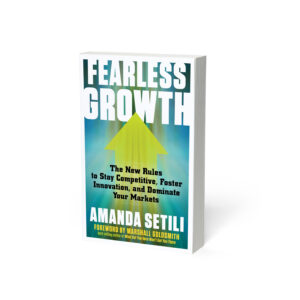
Each of the actions Bill took to involve and empower employees, collaborate with customers, and rely on partners for technical know-how required him to give up a degree of control, but as a result, he got to a safer place. With the help of employees, customers, and partners, his division tested a number of potential offerings and landed on one that gave customers considerable new value and took advantage of his company’s distinctive capabilities.
This example illustrates how each of the new rules for fearless growth requires you to give up a degree of control, but as a result, your organization becomes more adept at avoiding threats, more adaptable, and better able to spot and capture emerging opportunities.
Many growth companies have departments focused on acquisitions and mergers. You make a strong case that the company of the future will be radically different because you don’t need to own everything, but can partner, outsource, and grow in a variety of ways. How does this upend current practices?
By allying with partners, crowdsourcing, collaborating with others outside your company, and borrowing or sharing tangible and intangible assets, you can create new products and businesses and enter new markets, which would not be possible on your own. (The flip side is that because it’s easier than ever to “create something out of nothing” by crowdsourcing, outsourcing, and partnering, you are also more vulnerable to competitors that can pop up out of nowhere when you least expect it.)
If you want to grow, you should consider all the ways that you might be able to create something entirely new by partnering with other organizations and individuals that can bring something to the table that you don’t have. Just look at how Airbnb grew. More rooms are available from Airbnb than from the biggest hotel chains, yet Airbnb owns no real estate and manages no rooms.
Does this apply to small companies, too?
I’ve certainly found that the more we rely on other experts to contribute their expertise in marketing, research, and specialized consulting skills, the faster our firm grows. For example, we can work via video conference and other collaboration tools with partners anywhere in the world, and we can find any skill we need easily, through my personal network, and through tools like Upwork. Both large and small companies should think about how they can use partnerships and other collaboration mechanisms to grow.
Are you saying that companies can’t do everything on their own anymore?
Right. In a fast-changing world, we’ll be unsuccessful if we wall ourselves off, depending only on the relationships, people, data, assets, technology, and knowledge that are inside our company. We need to develop porous company boundaries, to reach outside our company, and to share and collaborate with others. This strengthens the people, processes, and capabilities inside our company and enables us to leverage the ideas and capabilities outside our company. Reaching outside enables us to commercialize our ideas faster, more easily, and with a lower cost.
Plus, enabling these flows in and out of our company mitigates the complacency and inertia that can develop when we are constantly focused inside the four walls of our business. Reaching outside the company for new ideas shakes up our thinking and gets us out of mental ruts.
The figure below shows the ways in which we can reach outside our corporate boundaries to access—and share—talent, data, assets, technology, knowledge, and relationships across our company’s borders. You can find this, and other helpful frameworks, here.
One of the rules for fearless growth is “connect and strengthen your ecosystem.” What do you mean by that?
Most of today’s most valuable companies created their success by building powerful ecosystems to connect customers, content providers, suppliers, and others to each other. Amazon has built an ecosystem both of sellers and of customers who contribute reviews. Apple has built an ecosystem of app developers. Facebook has built an ecosystem of content consumers and providers (mostly just regular people, sharing their photos and opinions), funded by the advertisers who want to reach them. Salesforce hosts events that attract over 170,000 customers and partners, who attend in order to interact with each other. The list goes on. But even a small company like my own can build a powerful ecosystem. We’ve done it by introducing our clients to each other, connecting them to other experts, and sharing learnings through our Strategic Agility® Think Tank events.
No matter what business you are in, you should be thinking about who’s in your ecosystem now, who you would like to be in your ecosystem, how you would like them to gain value from the ecosystem, and how you can make it easier for them to gain that value. Here’s a framework that may help you with this process:
Is it becoming more difficult to create new ecosystems, or easier? What are the risks?
With today’s technology tools, it’s certainly easier than ever to connect and strengthen your ecosystem, but it can require a leap of faith. You can’t be sure who will join your ecosystem and how they will interact with and do business with the other participants. You need to nurture and encourage the members you want to keep, while ensuring that bad actors don’t cause problems. My book Fearless Growth contains a number of helpful case studies and frameworks on this topic, as well as a section on “mistakes to avoid.”
7 Rules for the Future
You share seven rules for businesses to prepare for a rapidly changing future. Is there one that most companies struggle with more than others?
The first rule for fearless growth is “embrace uncertainty,” and I’ve observed that this is the one companies struggle with most. Everything in business is subject to change, often when you least expect it. And change brings uncertainty, which often creates fear, doubt, or paralysis. We don’t know what’s going to happen, so we wait. According to psychologists, humans are hardwired to dislike uncertainty; it’s in our DNA. In a recent study, researchers discovered that uncertainty is more stressful to people than knowing that something bad is definitely going to happen.
To compound this, we reward leaders for bringing certainty to their businesses. We reward them with bonuses and promotions for meeting revenue and profit targets set many months in advance. Most managers have learned from experience to play it safe when things are uncertain. They seek more information, conduct additional analysis, ask others for advice, and await direction or permission. All of this caution slows organizations down, even when it’s crucial to make a quick decision and take action.
Embrace the Uncertain
But why is it important to embrace uncertainty?
I’ve observed that instead of being a negative, uncertainty in business can actually be a positive. Why? Because the faster the market is changing, and the greater the uncertainty, the more opportunities you have to pull ahead of the competition. And if your organization develops the skills to continuously adapt to market change, you can maintain or even extend your lead over competitors. Businesses that have the skills to operate in uncertain environments and manage risk capably will be the winners in the long run.
Can you share an example of a company that has been effective at embracing and even exploiting uncertainty?
Tesla is a great example. When Tesla CEO Elon Musk set out to build a luxury electric car, he had a realistic view of his odds of success, assessing them at “a fair bit less than 50 percent.” As he was introducing the Tesla Model S, there were a number of risks and uncertainties, but Musk set out to tackle them. For example, because consumers were worried about the resale value of the car, Musk offered a buy-back guarantee. To allay customer concerns about safety, he made sure the car won the highest possible safety ratings. To address consumers’ anxiety about getting stranded with no battery charge, he built the car to go 300 miles without a charge and installed free Superchargers along all the major highways. Though the odds of success were initially rather low, he succeeded by identifying and addressing risks one by one.
Get in Sync with Customers
Distinguish between the former rule of market research with your new rule of “getting in sync with customers.”
In times past, market research was a primary mechanism for companies to learn about their customers. The problem is, market research often doesn’t tell you what customers really think or what they are really willing to pay for.
Nowadays, companies have much faster ways to gain customer input. For example, TripAdvisor reviews provide hoteliers and managers of attractions and restaurants with daily feedback on what customers are thinking, what they like, and what they don’t. There are many other examples of how, by analyzing data on the millions of online interactions customers have with their brands every day, companies can gain valuable real-time insight.
What about B2B markets? What’s the best way to gain customer insight there?
In B2B markets, collaborating with customers to co-develop innovations can be a far more powerful method of gaining timely, meaningful customer feedback, compared to conducting market research. By collaborating with customers, you can gain benefits such as these:
- Customers often see trends and market changes on the horizon that you cannot.
- Collaborating with customers enables you to discover synergies between your businesses that would otherwise be difficult to spot.
- You can often learn faster from customers than you can from your own internal team. After all, it’s customers who have the most to gain from your investing in the right innovations and product enhancements.
- Learnings from collaborating closely with one customer can be applied to other customers who have similar needs.
- Collaboration builds intimacy and trust, which means customers can become your best marketers, referral sources, and advocates—speeding the process of acquiring new customers and closing sales with other existing customers.
The following diagram shows how collaborating with customers can speed up the innovation cycle and enable you to make smarter decisions about what new offerings to bring to market.
Unleash Creativity
How do leaders unleash employee creativity? Or, put the opposite way, what stifles it?
In years past, corporate leaders were expected to make all the key decisions, leaving employees to merely execute. One of the problems with this top-down approach to decision making is that anyone who’s not at the top feels little responsibility for what happens in their piece of the organization. Employees play it safe. They keep their heads low and do what they can to avoid missteps and controversy. In this environment, there’s little incentive to come up with new ideas and considerable risk if you do.
If you want to fuel employee creativity in your organization and avoid these problems, try simply being curious. Seek out employee ideas and admit you don’t know everything. If you simply step back from trying to solve every problem yourself, and instead tap into the brains, hearts, and creativity of your employees, you will find that your employees are happy to step up. You’ll find that your employees will become more creative and adaptable. And certainly, in today’s fast-changing work, we do need every employee to be watching, thinking, and taking action.
The fearlessly growing company empowers employees to make more decisions—and bigger decisions. Empowering employees enables them to respond in a fluid way to changes in the market place, without asking permission.
The diagram below takes a framework that I introduced in my first book, The Agility Advantage: How to Identify and Act on Opportunities in a Fast-Changing World, and asks, “What would you like your employees to be thinking in order to maximize your ability to adapt and succeed?” My book Fearless Growth: The New Rules to Stay Competitive, Foster Innovation, and Dominate Your Markets has a wealth of examples and techniques you can use to get your employees thinking more this way.
What’s an example of how companies threatened by market change can enlist employees to help?
Take the example of Charlie, who manages a nationwide chain of Italian restaurants. Until recently, each of his locations was packed most evenings, with a loyal following of customers from the nearby neighborhoods. When food delivery apps, such as Grubhub, UberEATS, and Amazon Restaurants, started approaching Charlie with requests to deliver the meals direct to customers’ homes, Charlie was wary. The apps charged a hefty margin, so profits on the delivered meals would be minimal – or even negative. Plus, there were operational difficulties to be overcome. For example, how would the kitchens handle the additional, often unpredictable, volume? And, how could he ensure that hot food stayed hot, cold food stayed cold, and that the food arrived attractive, safe, and delectable at the customer’s doorstep?
Charlie knew he couldn’t opt out entirely—home delivery of food was a growing trend, and if his restaurants weren’t listed on the apps, he would miss out on opportunities to attract new customers, who might first encounter his brand through the app. He also knew he couldn’t resolve all the questions related to food delivery on his own. So he enlisted a team of employees, who were spread across diverse locations in each region, to come up with recommendations. These employees not only jumped at the chance to contribute, they became conduits for ideas coming from scores of other employees. Within weeks, the team had implemented several ingenious innovations in kitchen and packaging procedures to assure food arrived fresh. New customers discovered Charlie’s restaurants through the delivery apps, and sales grew healthily.
To be successful in today’s fast-changing markets, leaders need to be fearless in recognizing change in the marketplace, and they need to get in sync with changes in customer behaviors and new technologies, as Charlie did. And, like Charlie, they need to work with partners, enlist employees, and be constantly learning. In doing these things, they initially give up a degree of control, but in the end gain control, as they create a nimble organization that can adapt to the changing market.
Increase Trust
Trust isn’t new and is always foundational, but you say that business today requires more trust than ever before. Why is this? How do you build it?
 Trust is paramount in an environment of fast market change. An organization without trust is inefficient and slow. It experiences many stops and starts, as people check to see if they have the approvals they need and as they verify that other people have done what they said they were going to do. If you want to grow in today’s fast-paced business environment, you need to actively build trust between coworkers and with your business partners. My book offers a number of specific techniques for doing just that. Once you get it right, you’ll find you can move at lightning speed.
Trust is paramount in an environment of fast market change. An organization without trust is inefficient and slow. It experiences many stops and starts, as people check to see if they have the approvals they need and as they verify that other people have done what they said they were going to do. If you want to grow in today’s fast-paced business environment, you need to actively build trust between coworkers and with your business partners. My book offers a number of specific techniques for doing just that. Once you get it right, you’ll find you can move at lightning speed.
For more information, see Fearless Growth: The New Rules to Stay Competitive, Foster Innovation, and Dominate Your Markets.


